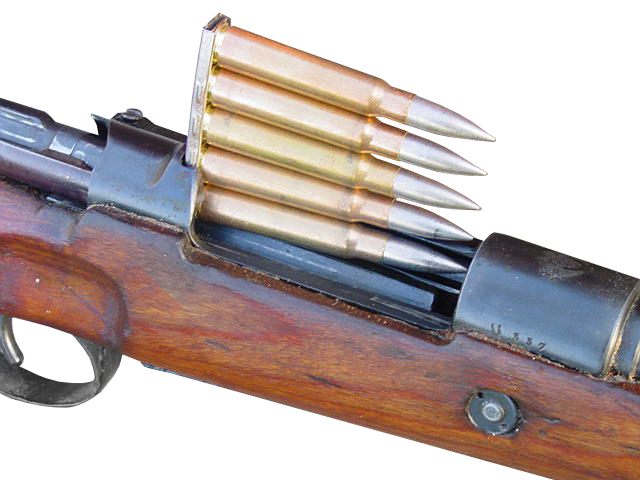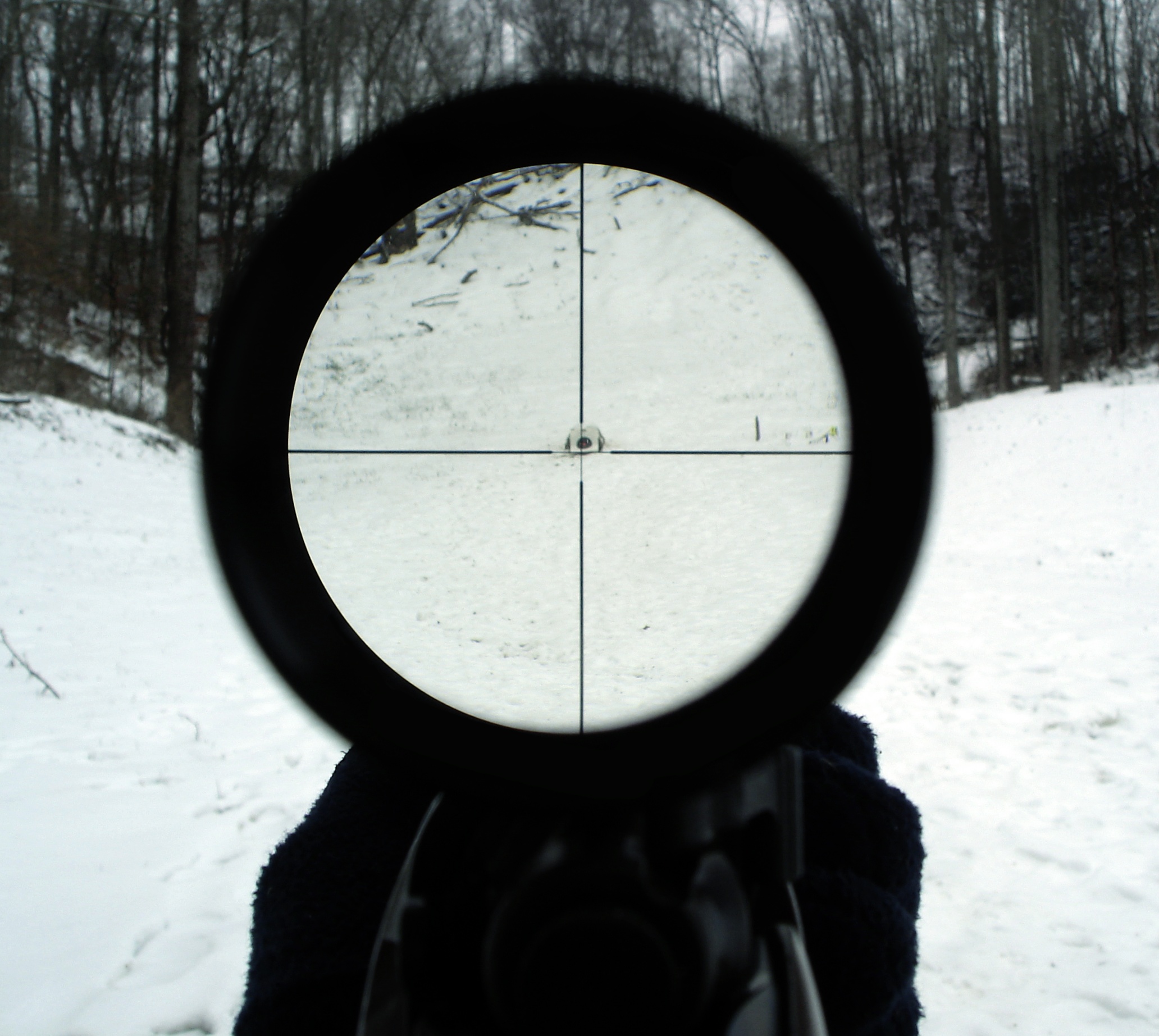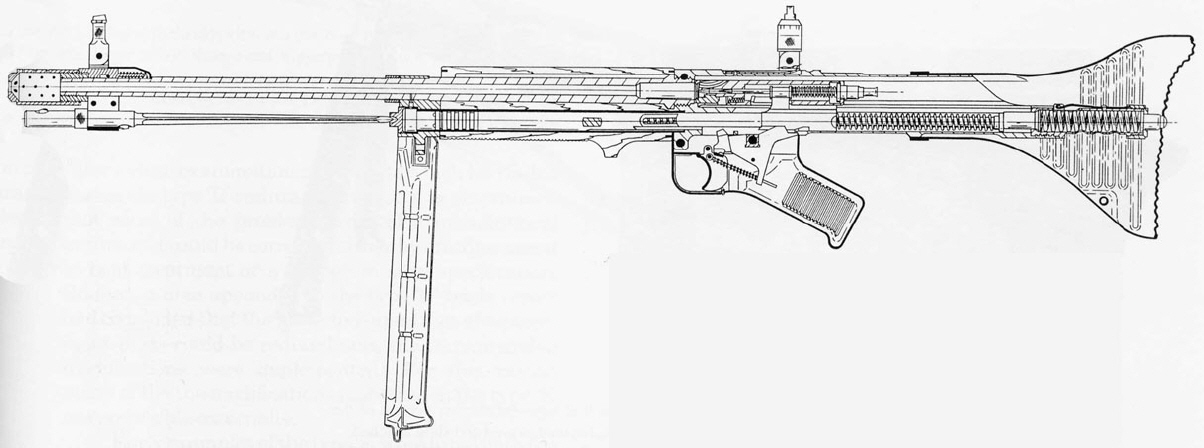|
ZF41
The ZF41 was an optical sight produced in Germany during the Second World War. History Starting from 1941, the short 1.5× Zielfernrohr 41 (ZF41) telescopic sight was fitted to some Karabiner 98k rifles for designated marksman use. The ZF41 was the first attempt to provide the ordinary infantryman with a rifle capable of being used, if not for pure sniping, then at least for sharpshooting. It was initially planned to equip most combat units with the ZF41 scopes, but only 6% of German weapons production could fit the sight. Though useful for sharpshooting with normal infantry units, the design was generally rejected by sniper schools and disliked by snipers, because the 1.5x magnifying scope was deemed insufficient for shooting effectively at point targets over long distances. Problems were the scope's extreme eye relief, poor functioning in bad light and low magnifying power. Nonetheless, lack of better telescopic sights meant the ZF39 was used by snipers at the early stage ... [...More Info...] [...Related Items...] OR: [Wikipedia] [Google] [Baidu] |
Karabiner 98k
The Karabiner 98 kurz (; ), often abbreviated Karabiner 98k, Kar98k or K98k and also sometimes incorrectly referred to as a K98 (a K98 is a Polish carbine and copy of the Kar98a), is a bolt-action rifle chambered for the 7.92×57mm Mauser cartridge. It was adopted on 21 June 1935 as the standard service rifle by the German ''Wehrmacht.''K98k Mauser Page Retrieved 28 March 2007. It was one of the final developments in the long line of Mauser military rifles. Although supplemented by semi-automatic and fully automatic rifles during World War II, the Karabiner 98k remained the primary German military rifles, German service rifle until the end of the war in 1945. Millions were captured by the Soviets at the conclusion of World War II and were widely distributed as military aid. The Karabiner 98k therefore continues to appe ... [...More Info...] [...Related Items...] OR: [Wikipedia] [Google] [Baidu] |
Telescopic Sight
A telescopic sight, commonly called a scope informally, is an optical sighting device based on a refracting telescope. It is equipped with some form of a referencing pattern – known as a ''reticle'' – mounted in a focally appropriate position in its optical system to provide an accurate point of aim. Telescopic sights are used with all types of systems that require magnification in addition to reliable visual aiming, as opposed to non-magnifying iron sights, reflector (reflex) sights, holographic sights or laser sights, and are most commonly found on long-barrel firearms, particularly rifles, usually via a scope mount. Similar devices are also found on other platforms such as artillery, tanks and even aircraft. The optical components may be combined with optoelectronics to add night vision or smart device features. History The first experiments directed to give shooters optical aiming aids go back to the early 17th century. For centuries, different optical ... [...More Info...] [...Related Items...] OR: [Wikipedia] [Google] [Baidu] |
Bundesarchiv Bild 101I-455-0013-37, Russland, Scharfschütze Im Graben
The German Federal Archives or Bundesarchiv (BArch) (, lit. "Federal Archive") are the national archives of Germany. They were established at the current location in Koblenz in 1952. They are subordinated to the Federal Commissioner for Culture and the Media (Claudia Roth since 2021) under the German Chancellery, and before 1998, to the Federal Ministry of the Interior. On 6 December 2008, the Archives donated 100,000 photos to the public, by making them accessible via Wikimedia Commons. History The federal archive for institutions and authorities in Germany, the first precursor to the present-day Federal Archives, was established in Potsdam, Brandenburg in 1919, a later date than in other European countries. This national archive documented German government dating from the founding of the North German Confederation in 1867. It also included material from the older German Confederation and the Imperial Chamber Court. The oldest documents in this collection dated back to the y ... [...More Info...] [...Related Items...] OR: [Wikipedia] [Google] [Baidu] |
Gewehr 98
The Gewehr 98 (abbreviated ''G98'', Gew 98, or ''M98'') is a bolt-action rifle made by Mauser for the German Empire as its service rifle from 1898 to 1935. The Gewehr 98 action, using a 5-round stripper clip loaded with the 7.92×57mm Mauser cartridge, successfully combined and improved several bolt-action engineering concepts which were soon adopted by many other countries, including the United Kingdom, United States, and Japan. The Gewehr 98 replaced the earlier Gewehr 1888 as the main German service rifle. It first saw combat in the Chinese Boxer Rebellion and was the main German infantry service rifle of World War I. The Gewehr 98 saw further military use by the Ottoman Empire and Nationalist Spain. It was eventually replaced by the Karabiner 98k, a carbine version using the same design, for the Wehrmacht under Nazi Germany from 1935 to 1945. History The Gewehr 98 was introduced into German military service in 1898, replacing the Gewehr 1888. The bolt-action design was ... [...More Info...] [...Related Items...] OR: [Wikipedia] [Google] [Baidu] |
Brno
Brno ( , ; ) is a Statutory city (Czech Republic), city in the South Moravian Region of the Czech Republic. Located at the confluence of the Svitava (river), Svitava and Svratka (river), Svratka rivers, Brno has about 403,000 inhabitants, making it the second-largest city in the Czech Republic after the capital, Prague, and one of the List of cities in the European Union by population within city limits, 100 largest cities of the European Union. The Brno metropolitan area has approximately 730,000 inhabitants. Brno is the former capital city of Moravia and the political and cultural hub of the South Moravian Region. It is the centre of the Judiciary of the Czech Republic, Czech judiciary, with the seats of the Constitutional Court of the Czech Republic, Constitutional Court, the Supreme Court of the Czech Republic, Supreme Court, the Supreme Administrative Court of the Czech Republic, Supreme Administrative Court, and the Supreme Public Prosecutor's Office, and a number of state ... [...More Info...] [...Related Items...] OR: [Wikipedia] [Google] [Baidu] |
FG-42
The FG 42 (German: ''Fallschirmjägergewehr'' 42, "paratrooper rifle 42") is a selective-fire 7.92×57mm Mauser automatic rifle produced in Nazi Germany during World War II. The weapon was developed specifically for the use of the ''Fallschirmjäger'' airborne infantry in 1942 and was used in very limited numbers until the end of the war. It combined the characteristics and firepower of a light machine gun in a lightweight form slightly shorter (but considerably bulkier and heavier) than the standard-issue Karabiner 98k bolt-action infantry rifle. Considered one of the most advanced weapon designs of World War II, the FG 42 influenced post-war small arms development, and many features of its design, such as general shape, stock style, gas-rotating bolt operation and sheet metal and plastic construction were copied by the US Army when they developed the M60 machine gun. History At the time of the Battle of Crete (Operation Mercury), German ''Fallschirmjäger'' (parachute in ... [...More Info...] [...Related Items...] OR: [Wikipedia] [Google] [Baidu] |
StG 44
The StG 44 (abbreviation of Sturmgewehr 44, "assault rifle 44") is a German assault rifle developed during World War II by Hugo Schmeisser. It is also known by its early designations as the MP 43 and MP 44 (''Maschinenpistole 43'' and ''44''). The StG 44 was an improvement of an earlier design, the Maschinenkarabiner 42(H). The StG 44 was the first successful assault rifle, with features including an intermediate cartridge, controllable automatic fire, a more compact design than a battle rifle with a higher rate of fire, and being designed primarily for hitting targets within a few hundred metres. Other rifles at the time were designed to hit targets at greater ranges, but this was found to be in excess of the range in which most enemy engagements actually took place. The StG 44 fulfilled its role effectively, particularly on the Eastern Front, offering a greatly increased volume of fire compared to standard infantry rifles. The StG largely influenced the Soviet AK-47, introd ... [...More Info...] [...Related Items...] OR: [Wikipedia] [Google] [Baidu] |
Gewehr 41
The Gewehr 41 , commonly known as the G41(W) or G41(M), denoting the manufacturer ( Walther/ Mauser), are two distinct and different battle rifles manufactured and used by Germany during World War II. The Walther variant of the G41 was far more common and successful in German military service. They were largely superseded by the improved Gewehr 43, which was derived from the G41(W) although both rifles served concurrently until the end of the war. Background While the Germans experimented with semi-automatic rifles as early as 1901, they didn't consider introducing such a weapon until the Soviets began issuing the SVT-40 rifle in large numbers for their troops. German semi-automatic recoil-operated prototypes proved to be too heavy and not meeting military requirements during trials, while their experience with the Mondragón rifle during World War 1, and studies on captured RSC M1917 rifles, both of which had several flaws, left the German High Command skeptical of ga ... [...More Info...] [...Related Items...] OR: [Wikipedia] [Google] [Baidu] |
Sniper
A sniper is a military or paramilitary marksman who engages targets from positions of concealment or at distances exceeding the target's detection capabilities. Snipers generally have specialized training and are equipped with telescopic sights. Modern snipers use high-precision rifles and high-magnification optics. They often also serve as scouts/ observers feeding tactical information back to their units or command headquarters. In addition to long-range and high-grade marksmanship, military snipers are trained in a variety of special operation techniques: detection, stalking, target range estimation methods, camouflage, tracking, bushcraft, field craft, infiltration, special reconnaissance and observation, surveillance and target acquisition. Snipers need to have complete control of their bodies and senses in order to be effective. They also need to have the skill set to use data from their scope and monitors to adjust their aim to hit targets that are extremely f ... [...More Info...] [...Related Items...] OR: [Wikipedia] [Google] [Baidu] |
Eastern Front (World War II)
The Eastern Front, also known as the Great Patriotic War (term), Great Patriotic War in the Soviet Union and its successor states, and the German–Soviet War in modern Germany and Ukraine, was a Theater (warfare), theatre of World War II fought between the European Axis powers and Allies of World War II, Allies, including the Soviet Union (USSR) and Polish Armed Forces in the East, Poland. It encompassed Central Europe, Eastern Europe, Northern Europe, Northeast Europe (Baltic states, Baltics), and Southeast Europe (Balkans), and lasted from 22 June 1941 to 9 May 1945. Of the estimated World War II casualties, 70–85 million deaths attributed to World War II, around 30 million occurred on the Eastern Front, including 9 million children. The Eastern Front was decisive in determining the outcome in the European theatre of World War II, European theatre of operations in World War II, eventually serving as the main reason for the defeat of Nazi Germany and the Axis ... [...More Info...] [...Related Items...] OR: [Wikipedia] [Google] [Baidu] |
Bundesarchiv Bild 101I-455-0013-15, Russland, Scharfschützen
The German Federal Archives or Bundesarchiv (BArch) (, lit. "Federal Archive") are the national archives of Germany. They were established at the current location in Koblenz in 1952. They are subordinated to the Federal Commissioner for Culture and the Media (Claudia Roth since 2021) under the German Chancellery, and before 1998, to the Federal Ministry of the Interior. On 6 December 2008, the Archives donated 100,000 photos to the public, by making them accessible via Wikimedia Commons. History The federal archive for institutions and authorities in Germany, the first precursor to the present-day Federal Archives, was established in Potsdam, Brandenburg in 1919, a later date than in other European countries. This national archive documented German government dating from the founding of the North German Confederation in 1867. It also included material from the older German Confederation and the Imperial Chamber Court. The oldest documents in this collection dated back to the y ... [...More Info...] [...Related Items...] OR: [Wikipedia] [Google] [Baidu] |






